We celebrate the 200th anniversary of the birth of the epidemiologist John Snow by looking at the historic and modern fight against Cholera. Also, news of what 4000 year old mummies are revealing about arterial disease, a novel antibiotic approach to battling bacteria, the Facebook app that turns likes into predictions about your personality and do animals practise dentistry...?
In this episode
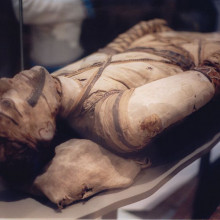
01:17 - Ancient mummies had clogged arteries
Ancient mummies had clogged arteries
Many people think that life was better in the good old days - but what about the good old, old days back in ancient Egypt? According to research published this week by an international team of scientists and mummy experts in the journal The Lancet, it turns out that one of the diseases that's usually thought of as an affliction of modern life - atherosclerosis, or clogging and hardening of the arteries - was actually around in people who lived thousands of years ago.
 Led by Dr Randall Thomas, the researchers did CT scans of 137 mummies from four different parts of the world - Egypt, Peru, southwest America and the Aleutian Islands - spanning more than 4,000 years of history from around 3,800 BC to the turn of the 20th century. The team carefully checked out the mummies' major arteries and blood vessel beds for the characteristic signs of atherosclerosis. They found signs of the disease in around a third of all the mummies they looked at, with older mummies who died on average in their forties being much more likely to have it than those who died in their thirties.
Led by Dr Randall Thomas, the researchers did CT scans of 137 mummies from four different parts of the world - Egypt, Peru, southwest America and the Aleutian Islands - spanning more than 4,000 years of history from around 3,800 BC to the turn of the 20th century. The team carefully checked out the mummies' major arteries and blood vessel beds for the characteristic signs of atherosclerosis. They found signs of the disease in around a third of all the mummies they looked at, with older mummies who died on average in their forties being much more likely to have it than those who died in their thirties.
Atherosclerosis increases the chances of having heart attacks and strokes, and it's usually thought to be caused by modern risk factors such as smoking, eating a poor diet and not exercising. But these mummies lived at a time before all of these things were major risks - including people from a pre-farming hunter-gatherer society on the Aleutian islands.
So these weren't just the classic Egyptian mummies that you might have seen in the British museum, who were likely to have had quite a luxurious life that might have put them at risk of the disease, but also regular people who had lived much simpler lives. And this isn't even the first time that mummies have been shown to have the signs of atherosclerosis - Egyptian mummies autopsied over a century ago also had evidence of the disease.
One possible cause that has been put forward is the smoke produced by cooking over indoor fires or soot from indoor oil lamps, which may increase the risk of atherosclerosis. But overall the scientists think that their findings point to the disease being a more fundamental part of human ageing than was commonly thought, and not as strongly linked to diet and other modern risk factors as we might believe. But other researchers warned that the new findings should be approached with caution, as it's not 100% clear that the kinds of evidence the scientists found on their CT scans are definitely the hallmarks of atherosclerosis, or that they would have caused heart attacks or other health problems.
We do know from large studies that eating a healthy diet, keeping active and avoiding smoking can cut the risk of heart disease. However, it's still not clear how much our individual genetic makeup may be playing a role, but this study does suggest that it's not exclusively related to an unhealthy modern lifestyle. And it also shows that the good old days may not have been that great after all.
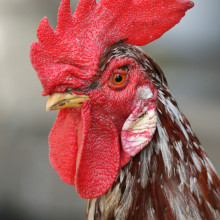
05:22 - Clock-a-doodle-doo
Clock-a-doodle-doo
Scientists in Japan have discovered that the dawn crowing of a rooster is controlled by their internal body clocks, not just by the rising of the sun.
A crowing cock signals the imminent sunrise and the start to a new day. But why does the rooster crow and how does he know when to do it? Nagoya University's Tsuyoshi Shimmura and Takashi Yoshimura wondered whether it's down to the animals' body clocks - circadian rhythms - or simply a response to seeing the sunrise?
 The Japanese duo used video cameras and sound equipement to monitor groups of cockerels placed under either a 12-hour light and dim-light cycle, or a constant dim-light condition.
The Japanese duo used video cameras and sound equipement to monitor groups of cockerels placed under either a 12-hour light and dim-light cycle, or a constant dim-light condition.
In the 12-hour situation, the birds began to crow about 2 hours before the light was switched on, just as they do in the wild. And when kept under only dim-light they also still crowed most at the pre-dawn period, indicating that they instinctively knew when to crow, even in the absence of any light cue.
Shimmura and Yoshimura also found in these low-light exposed birds that, with each successive day, the cocks crowed a little bit earlier each day. This is a characteristic sign that a process is under internal clock control.
Taking their ideas one step further, the researchers then decided to test whether other external stimuli like light or sound could also make the roosters crow. They found that both light stimulation and the sound of other familiar rooster crows could make the roosters crow if they were given at the onset of the daytime.
Delivered later in the day, however, these stimuli elicited far fewer responses. Moreover, if the stimuli were given during the night-time, the roosters didn't crow at all. This suggests that not only the pre-dawn crow, but also, light and sound-induced crowing, is under the control of the rooster's own body clock.
So, more accurately, we should be talking about clock-a-doodle-doo from these birds...
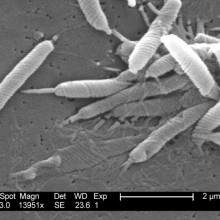
09:10 - Antibiotics Target Gene Expression
Antibiotics Target Gene Expression
with Michael McArthur, ProCarta Biosystems
This week, the British government's Chief Medical Officer, Dame Sally Davies called for antibiotic resistance to be treated as a major national risk on par with climate change or terrorism. To find out about a new type antibiotics that could reduce bacterial resistance, we were joined by Michael McArthur, the Chief Scientific Officer of the research company, ProCarta BioSystems.
Kat - What's different about the antibiotics that you're developing from the traditional antibiotics that we're rapidly running out of?
Michael - Well, traditional antibiotics go after only a limited set of targets. And you're right, that resistance mechanisms now are embedded in the clinic. So, it's very difficult to circumvent them now. So, our approach is to target entirely new therapeutic targets, which is gene expression. Bacteria need to turn on certain genes in order to survive inside the host, in order to become pathogenic. And by using simple oligonucleotide switches that are rationally and easily designed, we've been able to show in vitro and in vivo that we can stop these genes from being expressed and therefore, defeat infection. And that's important also because it's a genuine platform technology. We can anticipate making a whole series of antibiotics against a series of different pathogens rather than relying on a new discovery to find a new molecule and pairing it with a particular infection.
you're right, that resistance mechanisms now are embedded in the clinic. So, it's very difficult to circumvent them now. So, our approach is to target entirely new therapeutic targets, which is gene expression. Bacteria need to turn on certain genes in order to survive inside the host, in order to become pathogenic. And by using simple oligonucleotide switches that are rationally and easily designed, we've been able to show in vitro and in vivo that we can stop these genes from being expressed and therefore, defeat infection. And that's important also because it's a genuine platform technology. We can anticipate making a whole series of antibiotics against a series of different pathogens rather than relying on a new discovery to find a new molecule and pairing it with a particular infection.
Kat - So, the idea is that the antibiotics are actually these little stretches of nucleotides, these little stretches of kind of complimentary DNA that you would give those to people.
Michael - That's right. We call them transcription factor decoys and that's what they do. They mimic the binding sight of the transcription factors that would normally control gene expression. These transcription factors now bind to the decoys and we therefore, in that way, control gene expression.
Kat - And is this for just particular genes in the bacteria like the ones that make them grow or if you just target any genes, you'll just knacker the bacteria?
Michael - We choose our targets carefully so we can choose them, so there are narrow spectrum which is to say we can defeat specific infections like C. difficile without causing damage to the commensal bacteria - the good bacteria in your gut. Or we can design sequences for the very broad and defeat a wide class of bacteria like the gram negatives. So, it really puts us in-charge of determining the specificity of antibiotics and I think that's going to be important as we learn more about how to use antibiotics properly in the future.
Kat - Now, I know that there's other types of diseases where people are looking at trying to use these very short stretches of nucleotides, but it seems to me at the moment that there's a problem with actually delivering them really effectively to get into the right places in people's bodies in the right doses. Is this a challenge that you're coming up against?
Michael - It's a challenge we've had to overcome. So, we have a proprietary delivery system which allows us to deliver these decoys right in the heart of bacteria. We found a lipid which can encapsulate the oligonucleotide and form a nano particle, a small...
Kat - Sort of a fatty little bubble basically.
Michael - A fatty little bubble, yes which is a rather interesting and unique property that it can crossover bacterial membranes to get inside the cell.
Kat - Because these things are really impenetrable bacteria. I mean, that's partly why they're so successful. You just can't get anything in them.
Michael - Well, certainly several drugs have failed because they can't get into bacteria, but if you do make them membrane-like then yes, you can trick the bacteria and they get taken up readily. And then you can choose bacterial infections which occur either on skin or in the blood. So, it's not like we have to target them to liver cells. We can actually choose our infections which are more readily accessible for us.
Kat - So, where is this research at the moment? Is it just on bacteria growing on petri dishes in the lab or you're hoping to take it into humans?
Michael - Well, we've announced today that we're taking our lead programme which is a MRSA programme and it's the first product that we foresee. We're looking at topical applications, looking at nasal decolonisation. Staph areus grows naturally in your nose and if you can get rid of that and perform a major surgery then that's a great advantage and helps recovery.
Kat - So, some kind of presurgical nose spray basically.
Michael - That's right and that's the first step for the company and then we see further products around Staph areus as an intravenous drug. But we're following up also with C. difficile products and products to defeat gram negative infections which are the really big challenge out there.
Chris - Can I just ask because one of Dame Sally Davies's points is that we're seeing enormous amounts of antibiotic resistance. So, what is to stop the bugs becoming resistant to the challenge or the gaunt that you're throwing down with your new antimicrobial strategy?
Michael - Well partly, it's because our system is so adaptable. So, if we do see resistance arising, we have other targets we can go for and simply by making rational changes, the oligonucleotide sequence, we can get around any resistance mechanism that comes up at the level of transcription. The delivery system seems to be very robust, so we've tested that against a whole panel of clinical isolates. We haven't found one yet that it can't get into, so I think there is hope there. There's nothing that's going to be resistance proof and I think in the future, we're going to be looking at better stewardship of antibiotics. More considerate use, marrying it with better diagnostics, and that's going to be part of the solution as well.
David - I was just wondering. You mentioned that different bacteria within the gut, so you've got these healthy and these sort of unhealthy bacteria and you can target specifically unhealthy bacteria. So, is there any idea whether the human immune system is going to be susceptible to these oligonucleotides or is it definitely very specific just to bacteria?
Michael - We can use bioinformatics to make sure that the sequences should only affect bacterial gene expression patterns, but we do see a great role for our technology as a genuine research tool to try and unpick that relationship between gut microbes and the human immunogenic reaction. I think that's going to be a very interesting area of our research as well.

15:18 - Water Dimers Detected
Water Dimers Detected
Physicists from the Russian Academy of Sciences claim to have made the first detection of water dimers in realistic atmospheric conditions.
Water vapour is the third most common gas in the Earth's atmosphere, and it plays a key role in radiative exchange process, by acting as the principal absorber of both sunlight and blackbody radiation. It has been known for decades that there is a discrepancy between established theoretical models of this radiative balance and observations of atmospheric temperatures. It seems that water vapour can absorb even more radiation than predicted by the models.
One explanation for this discrepancy was offered in the 1960's by Sergei Zhevakin - he demonstrated that hydrogen-bonded pairs (dimers) of water molecules would be much stronger absorbers than single water molecules (monomers), and that a mixture of >99% water monomers and <1% dimers would rebalance the atmospheric equations.
The search to find evidence for the existence of these dimers has been on-going ever since, with many successes detecting dimers at temperatures near absolute zero. The main challenge with detecting dimers at higher temperatures is the weakness of their infrared signatures - it is very difficult to separate the vibrational signal of a dimer from that of the dominant single water molecules.
The Russian team have looked at an alternative signature - the rotational spectra of water dimers - a four peak "spectral fingerprint" which can be detected at room temperature. The team have built a highly sensitive spectrometer that can measure the absorption of millimetre-wave radiation in water vapour, thus detecting the rotational spectra of water dimers. Their spectrometer uses a resonator - a vapour-filled cavity with mirrors at either end. By adjusting the mirrors, specific (resonant) frequencies of light can be selected, and the sharpness of the resonant peak depends on how this light is absorbed by the vapour in the cavity. In this way, this instrument can 'map' the absorption of water vapour, measuring any peaks in the millimetre-wave region.
Mikhail Tretyakov, a lead author on this paper, has been developing this spectrometer for a decade. He states that the sensitivity of the instrument is an order of magnitude higher than anything that has gone before - the team have used their spectrometer to detect the rotational spectrum of water dimers at 23 °C and at 0.017 atm.
This is the first detection of water dimers under representative atmospheric conditions. But there are still some unanswered questions in the paper - the observed dimer peaks are four times broader than predicted, and authors argue that this is due to some asymmetry in the dimer not predicted by models. There is still some debate around the validity of this conclusion, but regardless, the consensus is that this work represents a big step towards directly measuring the abundance of dimers in the atmosphere and may help scientists in many fields gain a better understanding of how their presence affects climate.

19:15 - Can Facebook predict your personality?
Can Facebook predict your personality?
with David Stillwell, The Psychometrics Centre, University of Cambridge
'Liking' things on Facebook may give away more than you realise. A new study used 'likes' to predict users gender, ethnicity, sexuality and personality. We were joined by David Stillwell from the Psychometric Centre at the University of Cambridge who told us about the paper and the publicly accessible online tool youarewhatyoulike.com.
David - So, what we do is we take Facebook likes and then we put them  together with people who have taken our personality and IQ tests, and then we see whether we can predict people's personality just from their Facebook likes. And so, that's what youarewhatyoulike.com is. Anyone can go to that website. Log in with Facebook. It takes out Facebook likes and then tries to predict their personality.
together with people who have taken our personality and IQ tests, and then we see whether we can predict people's personality just from their Facebook likes. And so, that's what youarewhatyoulike.com is. Anyone can go to that website. Log in with Facebook. It takes out Facebook likes and then tries to predict their personality.
Kat - So, before we explore this a bit in-depth, would anyone like to share what it came out as because for me it says that I'm liberal and artistic, yes, I get that. Well-organized, hmm, assertive and competitive, absolutely, emotional, I guess so. But also, it says I'm shy and reserved, but it said that one of the likes that was most indicative of my profile was liking corsets and I do spend a lot of my weekends prancing about in a corset. So, I don't see how that makes me shy and reserved. Anyone else on the team want to share?
Chris - David, what did you get?
David - Well, I was quite interested in my results because it does describe some aspects to my personality quite well, so I got the whole artistic angle as well and they also managed to pick up that I'm quite introverted. So, that's quite an interesting, quite subtle thing I think to pick up on. Yeah, I think it describes me relatively well. I'd like to have a look in exactly how they've determined this more interestingly, but yeah.
Chris - Laurie, what did you find?
Laurie - Well actually, myself and Kat, I don't think should get on at all because apparently, I'm conservative and traditional where I've been liberal which is a bit shocking, and also, shy and reserved which I'm sure....
Chris - We can tell. Yes, that definitely is you Laurie all over. I mean, I just don't believe it David Stillwell because it told me I calm and relaxed. I mean, how about that? It also said I was highly organised and artistic. I think it should've said autistic more than artistic to be honest if I'm quite frank. Kat...
Kat - But you have to be a bit organised to run a show like this. But David, let's find out a little bit more about how this actually works because I mean, what you've got here is very bipolar things. You're either this or you're this. How did you kind of work out what the different categories were from the personality test that you've got?
David - Sure, so normally, with the personality test, we don't just say, you're either extroverted or introverted. So, in our actual study, we were correlating the continuous variable of extroversion with our prediction from likes. But it's just on You Are What You Like, we thought it's easier if it's simplified and then also, you know, it's a bit boring if you're near the middle. So, rather than saying that someone is average, we say something a bit more interesting.
Kat - And so generally, when you look at this kind of thing, how accurate do you find those sort of predictions of people's personality just from their Facebook likes?
David - So, for openness for example and which is one of the personality traits where about 80% is good as a personality test which is pretty amazing when you consider that no questions had been asked. It's just completely based on the data that you kind of collected on Facebook. For IQ, it's about half as good as an IQ test and we also predicted some other things such as sexuality. So, if you've got a male homosexual and a male heterosexual, and then just from their Facebook likes, 88% of the time, you can predict which is which. We did the same thing with ethnicity. So, an African American versus a Caucasian American, 95% of the time, we can say which is which just from their likes.
Chris - We've heard from Ben who says, "I mean, to a certain extent, this just reflects the image that people want to portray, doesn't it?"
David - But that can apply to lots of situations. I mean, in real life, you decided which clothes to wear. When you're at work, you pretend that you're more organised than you may be at home. So actually, one of the good things about Facebook is it's very hard to fake because not only is it years that you spend sort of building up these likes, but also, your friends on Facebook as well. So, if you suddenly decide to like something that they know doesn't match you then they're likely to say something about it.
Chris - And you can pick that up.
Kat - The thing that I find a little bit scary about all of this is that there's more and more talk about online privacy and what companies like Facebook are doing with our data. I mean, we've had sort of a laugh. Knowing You Are What You Like is quite funny. Am I really shy and reserved? But how could data like this actually be used by online companies and is there anything we can do to protect ourselves and protect our privacy?
David - Sure, so it's worth saying first of all that there are benefits. So, my idea of situation would be, if I go to a website then instead of that website showing me every advert or every product that it's trying to sell, if I could just tell it a little bit about me then maybe it could just show me these three products which are actually likely to be interesting to me. And I'd prefer that because I see adverts for dating and mascara, and I have no interest in getting mascara. So, it's just kind of annoying and a bad user experience.
Chris - You do really David, just be honest.
Kat - What about the slightly, the more sinister thing? How can people protect themselves online?
David - Sure, so one situation that you could imagine happening in the UK is, if you like for example something that suggests that you're introverted, Terry Pratchett. So, if an employer came to your profile, swore that it looks like you're an introverted person, then if they're looking for someone who works well in teams and those kinds of buzz words, then they may not think that you're someone who could fit in their organisation so they may not invite you to interview. So, I recommend that people have a look at the things that they like especially because they do build up over time and decide whether they really match what you as a person want to be associated with.
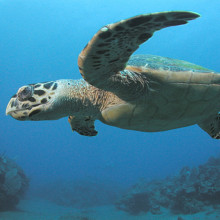
26:00 - Turtle Mating Habits - Planet Earth
Turtle Mating Habits - Planet Earth
with Karl Phillips, University of East Anglia
Despite the ban on the international trade of its shell, numbers of the critically-endangered Hawksbill turtle are continuing to decline.
Because these turtles spend most of their lives at sea, exact numbers are not known, but females come to lay their eggs in the Seychelles on the Island of Cousine. And, by studying the genetic material of these turtles and their hatchlings, recently published research is helping conservationists plan for the future.
Planet Earth podcast presenter Sue Nelson went to meet Karl Phillips from the University of East Anglia to find out more about the research...
Karl Phillips: Welcome to the lab. This is the business end of it, as it were.
Sue Nelson: You've got a large refrigerator here - open it up and lots of colourful plastic boxes. There's a blue one.
Karl Phillips: So inside each of these plastic boxes are 100 tubes of ethanol and each tube containing a very small piece of turtle tissue. If I can find the box I'm looking for, I can show you the kind of samples that we are collecting from these animals in the field.
Sue Nelson: Which part of the turtle is the sample actually from?
Karl Phillips: So from the adult females we collect the sample from the trailing edge of the front flippers and we try to do that when the adult is laying its nest, when an adult female turtle is laying her nest she goes into a kind of trance and she really becomes completely oblivious, so the procedure of collecting a tissue is going to be a bit uncomfortable for the animal but if its done at a time when she's in that kind of trance it's almost like she is under an anesthetic she really doesn't react at all.
Sue Nelson: She's too busy focusing on what she is actually doing.
Karl Phillips: Her eggs and her nest.
Sue Nelson: So the sample itself is incredibly small isn't it?
Karl Phillips: Yes. So here is a sample from an adult female.
Sue Nelson: Oh my goodness that is just a couple of millimetres square effectively isn't it?
Karl Phillips: Yeah, and from that I will then take a razor blade and take a very small slither of that and that will yield enough DNA to do a DNA profile of that female. The hatching ones are even smaller. These really are tiny and these are taken -
Sue Nelson: In goes the tweezers again - oh, yes, this is almost one millimetre square effectively.
Karl Phillips: Yes, that really is tiny. So that's taken from above the right back  leg of the hatchling just when it's on its way to the sea. So the flesh of the shell is still soft at this time and there's good published evidence that this kind of sampling doesn't cause any longterm harm to the hatchlings. So the female turtles lay their nest, we pick 20 hatchlings at random, take a small flesh sample from each of them and then the hatchlings are released to the sea. They are allowed to finish their scampering down the beach.
leg of the hatchling just when it's on its way to the sea. So the flesh of the shell is still soft at this time and there's good published evidence that this kind of sampling doesn't cause any longterm harm to the hatchlings. So the female turtles lay their nest, we pick 20 hatchlings at random, take a small flesh sample from each of them and then the hatchlings are released to the sea. They are allowed to finish their scampering down the beach.
Sue Nelson: And what have you found then from examining the DNA from these samples?
Karl Phillips: What we've found is that the typical female hawksbill in our population tends to mate with just a single male. Now within a nesting season a female hawksbill will lay four to five clutches of about 160 or so eggs about two weeks apart. Now if we look at the sequential clutches of a particular female, we find that it is the same male for each female who has fathered all of her offspring. She is mating once at the beginning of the season, storing the sperm from that single mating and then using it to fertilise all of the sequential eggs, and when you think of that that's quite an impressive feat. She's laying five clutches of 160 eggs, so 800 eggs all fertilised by a single mating. That's pretty special.
Sue Nelson: Gosh - so with gaps in between. So storing that sperm and then however many...it is weeks or months later?
Karl Phillips: It's typically about two weeks between clutches. So after five clutches, it could be five or six clutches, we're talking 75 days she might have stored that sperm. It has remained viable all that time. One other thing I should point out is that a very small number of our females, about 10%, had mated with a second male but what was particularly striking about this was that just as a female had been singly mated and we see the same one father across all five of her clutches, if she were mated twice it would be the same two males across all of her clutches and what's more those two males would have roughly the same proportions of paternity consistently across their nests.
Sue Nelson: Can this help with the conservation of these endangered turtles?
Karl Phillips: Yes it can. Without doing this kind of study you wouldn't know how many breeding males are contributing to your population, you might see 50 females nesting of your beach but what if they've all been mated by the same male. We don't see that. In fact every single female in our sample had been mated with a different individual male. That to us is highly indicative that there's a large number of males out there and that's very good from a conservation genetics perspective.
Sue Nelson: So for once this sounds like quite good news from a conservation point of view.
Karl Phillips: It's very good news and coupled with the fact that on some of these protected islands in the Seychelles the hawksbill breeding population is now going up and so as things stand based on this that the future looks quite promising.
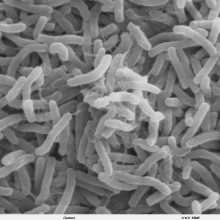
31:13 - Fighting Cholera Today
Fighting Cholera Today
with Matthew Waldon, Harvard University Medical School
As part of our celebration the 200th anniversary of the birth of the epidemiologist John Snow, we spoke to Matt Waldor from the Harvard Medical School about how we tackle Cholera in the modern world and find out how the disease could have reached Haiti through relief workers.
Matt - Cholera is a diarrheal disease, but it's not like diarrhoea that you or I have probably ever experienced in our life. It is extremely, extremely severe watery diarrhoea. So, what is most traumatic about cholera is the rapidity with which it can kill its victims. Cholera is caused by a bacterium, a gram negative bacterium, Vibrio cholerae. We usually get infected when we drink contaminated water and a person can be entirely well and then be infected and die from choleric diarrhoea within 7 hours. It may be the most rapidly fatal infectious disease that we know. This organism has afflicted humans really since the beginning of recorded history. There are perfect clinical descriptions of cholera in Sanskrit text that date back at least 3,000 years ago.
Chris - And of the people who succumb to cholera i.e. get infected, what proportion will survive it?
Matt - Well, if left untreated, there's almost a 50% mortality of severe cholera,  but in the early '60s, mostly in Bangladesh and in some parts of India, people discovered that they could use what is called rehydration therapy which is just give people salt water with some glucose and that can rehydrate them either orally or with intravenous solution, and then mortality rates can go to below 1%.
but in the early '60s, mostly in Bangladesh and in some parts of India, people discovered that they could use what is called rehydration therapy which is just give people salt water with some glucose and that can rehydrate them either orally or with intravenous solution, and then mortality rates can go to below 1%.
Chris - John Snow must be something of a hero of yours as a specialist as you are in cholera.
Matt - Yes, he certainly is and even though Richard Barnett is maybe deflating a little bit the story of Snow's heroism, I think we shouldn't belittle the profundity of his work and his observation which is generally regarded as founding the field of epidemiology by linking a particular vehicle, in this case, contaminated water with a disease that is so far different than the paradigm that ruled the day as the professor said, miasma theory.
But to go forward 200 years, we were inspired by Snow's work, in particular, by tracing how cholera got to London and that was probably via a sailor from Hamburg. The epidemic in 1848 that killed 50,000 people in London, that was probably brought to the city and Snow recognized this and tried to publish it and was rejected by sailor from Hamburg which had previously experienced a big outbreak of cholera. We asked a similar question in late October 2010, how did cholera get to the Island of Hispaniola which includes the nation of Haiti? There had never been, as far as we know, cholera in Haiti ever, before October 16th, 2010.
Kat - So, in Haiti, to sort of link Snow's work to tracing the modern outbreak today, what happened in Haiti was a massive earthquake and then contamination of the water supply. Can you give me an idea of the scale of the cholera outbreak that happened there?
Matt - Yes, absolutely. So, as far as we know, there was never a cholera in Haiti until this outbreak. The earthquake happened in January of 2010. The outbreak didn't occur until October. So, the cause of the outbreak was a great mystery and that's what we'll talk about in a minute. But the gravity of the outbreak which continues to this day is enormous. To date, something on the order of 700,000 people have suffered severe cholera which is about 7% of the Haitian population and about more than 8,000 people have died so far.
Kat - That's a huge number. So, how are you going about trying to track the routes of this massive outbreak?
Matt - What we did, once we learned of this outbreak in mid-October 2010, some physician colleagues of mine were able to get some samples from the Haiti outbreak and what we did, which I view as sort of a modern parallel of Snow's work was very rapidly, using some very new sequencing technology, determine the complete genome sequences of 3 isolates from different areas in Haiti from a very early part of the outbreak. And then we also sequenced strains from different parts of Asia and also from Latin America. Most of us in the field thought that most likely, the outbreak was caused by some local strain from the Americas. Cholera had been absent from the Americas for about a century before 1991 when it hit Peru and then infected more than a million people. It never got to Haiti though, but we thought, well, there was a terrible earthquake. Maybe somehow, cholera came from the sea and infected and got into the water supply in Haiti, but that turned out not to be the case?
Kat - So, where did you find the source?
Matt - The full genome sequence of the Haiti outbreak turned out to be nearly identical to the genomes of strains from South Asia and they were distinctly different from the strains from Latin America. So, that tended to strongly argue against an origin from the Americas and suggested instead that they came from Asia.
Kat - So, how did they get there then?
Matt - Yeah, more traditional, real Snow-like shoe leather epidemiology work done by a French epidemiologist Rene Perrow showed that the earliest part of the outbreak began adjacent to a Nepal UN security forces. Those security forces had come from Kathmandu Nepal, just 2 weeks after there was an outbreak of cholera in Kathmandu. Although none of them were symptomatic, what transpired 2 weeks later was the beginning of this epidemic and it was known that the effluent from the toilets of that base actually drained ultimately into one of the main rivers in Haiti, and that's how the epidemic spread. So, I think in a way, Perrow's epidemiology even trumps our modern genomics in making the case extremely strong that the strain actually came to Haiti via human activity, just like Snow realised that a sailor from Hamburg brought cholera to London in 1848.
Chris - Your final thought of cholera and its present situation in the world, Matt.
Matt - Going back to John Snow, even though Snow found that epidemiology and let us understand the spread of cholera, in the past 8 years or so, the WHO has found that cholera is increasing around the world. So, great challenges still remain on the road that Snow started this on.
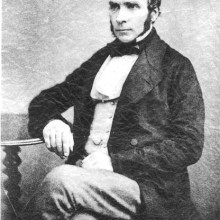
33:57 - The Legacy of John Snow
The Legacy of John Snow
with Richard Barnett, Sick City Project
Chris Smith spoke to medical historian and Wellcome Trust Engagement fellow Richard Barnett, from the Sick City Project, about why we're celebrating the 200th anniversary of the birth of the epidemiologist John Snow. He started by asking what conditions were like in London in John Snow's time, back in the mid-19th century.
Richard - If one wanted to pick one word to describe London in the mid-19th century, one would have to go for 'filthy' I think. This is an enormous city, it's a wealthy city, it's very, very powerful city, it's the headquarters of one of the greatest empire, certainly one of the largest empires the world has ever seen.
But at the same time, it's serviced by a sewage system and a system for supplying freshwater that hasn't really changed since medieval times. Most houses, well into the 1820s, 1830s, still have an old-fashioned cesspit in the cellar, so you put all of your excrement in a hole in the ground. Once a month, somebody comes along, digs it out, takes it off to the countryside, and spreads it on the fields. From the 1820s and 1830s, water closets start to become more popular. As we all know, if you have a lavatory in your house, you need two things. Firstly, you need a pipe bringing freshwater into the house, but you also need a pipe taking all the waste out of the house. And this is the crucial problem. There's no kind of central state run sewage disposal system at this time. What you have is a network of short sewers that simply pour all of these waste into the Thames and the Thames is a tidal reverse so it goes back and forth, twice a day, stirring all this up into the most incredibly disgusting, horrible, smelly kind of mess.
Chris - But also equally, when people are trying to cope with the fact there are no sewers and they've got lots of this stuff building up in the bottom of their house. Then if it overflows, there's going to be unpleasantness in the house, so they're going to take steps for that not to happen, and they're presumably going to empty this stuff before that happens and they're going to head to the street, aren't they?
Richard - That's not so much a problem by the 19th century. From a modern perspective, the major problem that this brings to light is the way in which drinking water is being drawn from exactly the same place that everybody is getting rid of their sewage. So, in modern terms, that's the perfect breeding ground for a kind of faecal-oral cycle of contamination. But the major concern for doctors at this time, is smell. The basic idea is that any kind of rotting generates noxious vapours known as miasmas. These rise into the air, they blow around in the air and if you breath them in, you will end up developing a filth disease like cholera or typhoid.
Chris - So, John Snow is operating in this environment where the prevailing theory is, disease comes in the form of airborne smells, malodours, miasma and yet, he connects that there is localised outbreaks of disease associated with certain environments. So, he's sort of pinning things down to an environment rather than just a generalised smell.
Richard - Well, the heroic myth of John Snow is generally based around this  heroic moment that took place on the 8th of September 1854. First thing that morning, a party of men approached a communal water pump on what is then Broad Street. It's now Broadwick Street in Soho and they take the handle off the pump.
heroic moment that took place on the 8th of September 1854. First thing that morning, a party of men approached a communal water pump on what is then Broad Street. It's now Broadwick Street in Soho and they take the handle off the pump.
Snow through epidemiological work, through some extremely brilliant insights has come to the conclusion that water from this pump is responsible for a terrible cholera epidemic which has killed about 500 people in Soho over the previous week. From the 1930s, a heroic myth has been woven around this story and there are really sort of three claims that this myth makes. Firstly, that Snow discovered the cause of cholera which he himself in his writings was very clear that he hadn't. Secondly, that he brought the epidemic to an end by removing the handle which again, he in his writings is very clear that he didn't and finally, that in making this argument, he revolutionised the ways in which his contemporaries thought about infectious disease which again, I'm afraid to say, he didn't.
Chris - So, why did it get so celebrated, but not until maybe 100 years almost after he died?
Richard - The change really comes. In 1936, when an American epidemiologist re-publishes Snow's 1855 pamphlet on the mode of communication of cholera where he sets out some remarkable epidemiological evidence for this conclusion that cholera is transmitted by water. Now, if you look at the status of epidemiology at that time, it's a comparatively low status profession. One of the things that this professor was trying to do was to create, if you like, a heroic founding father, a kind of foundational story for epidemiology and in the process, raises its intellectual status, but also, it's social status as a profession.
Chris - Rather shame to be eroding that, but I mean, nonetheless, it's a good story in the telling, isn't it? Well, I mean, what happened when John Snow's famous pump did to have the handle taken off? What was the outcome then?
Richard - Well, as Snow says in his pamphlet, cases of cholera were sharply declining in the days before the pump handle was removed and they didn't stop immediately as soon as it was taken away. So, the removal of the pump handle was really sort of symbolic. It was the local parish authority, showing that they'd accepted his ideas, whether or not it had any practical impact.
Chris - So, Snow gets the pump disabled, he has got some very interesting data. So, what does he do with it?
Richard - Well, the reason that epidemiologists are interested in celebrating Snow is because of two - as he called them natural experiments that he carried out during the 1854 Soho outbreak. The first of these was a detailed, almost forensic epidemiological study of the outbreak in Soho, the one that was clustered around the Broad Street pump and he finds one very striking case that's often referred to as the Hampstead widow.
A woman called Susannah Eley had lived in the area for most of her life, but she'd retired up to Hampstead. But somehow, she'd got a taste for the water from the Broad Street pump. Heaven knows what this water must have tasted like, but she was very, very keen on it. So, her relatives would send barrells of this water up the hill to Hampstead. Now, she suffered cholera, she died of cholera. Nobody else in Hampstead at that time suffered from the disease, so clearly, this was an isolated outbreak and Snow was able to link it directly to the consumption of water from the Broad Street pump.
 He also collected a great deal of data about death rates in and around the Broad Street pump. He then maps them onto a map of Soho, using a rather elegant sort of bar chart system. This is sometimes referred to as the ghost map and this provides a really striking visual demonstration of the fact that cholera cases cluster very obviously around the Broad Street pump. Now, this is a really, really striking correlation. It doesn't demonstrate causation.
He also collected a great deal of data about death rates in and around the Broad Street pump. He then maps them onto a map of Soho, using a rather elegant sort of bar chart system. This is sometimes referred to as the ghost map and this provides a really striking visual demonstration of the fact that cholera cases cluster very obviously around the Broad Street pump. Now, this is a really, really striking correlation. It doesn't demonstrate causation.
So Snow's second natural experiment is to study to two water companies who supplied water to South London. One of these companies, the Southwark and Vauxhall gets its water from Battersea Park. That's a stretch of the river that in the 1850s is very heavily polluted and very, very dirty. The other company, the Lambeth has waterworks up at Thames Ditton. The water is recognised to be much, much purer, there's much less sewage in it. So, when Snow has finally finished his study, he discovers that people who are getting their drinking water from lower down the Thames where it's much more polluted are about 10 times more likely to die of cholera.
Chris - That's pretty compelling, isn't it? I mean, that would stand up to scrutiny today. It would be so much of journal for an epidemiological study. I mean, this is pretty amazing as a piece of work that someone was doing so early on.
Richard - Absolutely. I mean, mathematically, it's very, very impressive and again, retrospectively to our modern eyes, it's an extremely impressive piece of work especially given that this is basically one GP working in Soho and doing all of this stuff in his spare time, while he's trying professionally to deal with the cholera epidemic amongst his patients.

48:06 - Tracking the Global Spread of Cholera
Tracking the Global Spread of Cholera
with Ankur Mutreja, Sanger Institute
Naked Scientist Kate Lamble spoke to PhD student Ankur Mutreja from the Sanger Institute to discuss his work; sequencing the genome of cholera bacteria in order to track the 7th pandemic of the disease.
Ankur - So, my PhD really is all about to study the evolution of the bacteria which causes cholera and based on that to actually track the spread of this bacteria globally.
Kate - How did you first get interested in cholera specifically as a disease?
Ankur - I come from India and although I come from North India, I've heard about cholera a lot since I was a child and I've in fact, seen a cholera outbreak in my region. So, when I got some opportunity to do some cholera work, it really excited me and most of the samples, as they were coming from India and Bangladesh, those places being endemic, they just really hooked me up and I thought have to do with this as my PhD.
Kate - So, why would we want to watch how the bacteria of cholera changes over time?
Ankur - After doing this, we can plot the family tree, if you like, of this bacteria and we can find out the ancestor of this bacteria and we can precisely actually tell when those ancestors existed and where those ancestors were based. From that, you can basically track the spread of this bacteria backwards.
Kate - How do you find out how the bacteria is related to a family tree?
Ankur - Okay, so what you basically do is, you take the bacteria, you isolate the genome which is basically the DNA and then you sequence the DNA of that bacteria, and in those genomes, you then see the difference is among those DNAs. And based on those differences, you can see which bacteria group together and which bacteria separate. So, that's how you can draw the phylogenetic tree or a family tree for that bacteria and you can track the spread.
Kate - How does tracing this and seeing how it's spread help us in tackling the disease?
Ankur - So, once you have tracked the particular spread, you know what particular type of bacteria is around these days which is causing more severe disease if you like. So, if then you see a disease anywhere, where it wasn't there or if someone has got it new, you can see if that bacteria matches that particular type of bacteria and then you'll be quicker in taking actions because you know much more about that bacteria already.
Kate - So, by following it, if it moves from India to Bangladesh, we can take those lessons that we learned from India and apply them in Bangladesh.
Ankur - Absolutely. So, if a bacteria has spread with people, with travel, so our study showed that this bacteria can travel with people. They can be carriers where they can be export and import a food which could result in transfer of these bacteria. So, these are the lessons we've learned. We can control this in the future.
Kate - Who's able to use that data?
Ankur - Essentially, everyone can use this data including public health parties. It's up to them how they want to use this. So, if they want to use it, they'll see. Then in fact, the antibiotic resistance actually came in to these bacteria. So, based on that, they can do their decisions.
Kate - So, you can look at how bacteria becomes antibiotically resistant. How does that help tackling it from a public health point of view?
Ankur - So, if a bacteria has gained a particular type of antibiotic resistance, obviously, that antibiotic would not treat that disease and then when you have tracked that particular type of bacteria and you know this is the bacteria which had that type of resistance, you wouldn't be using that resistant - that antibiotic again against that bacteria, so you'll try a new antibiotic, you'll try a new therapy approach.
Kate - So, you can forewarn doctors about what to use and also, what to stockpile I suppose.
Ankur - That's right.
Kate - How different is the bacteria you find nowadays from one you'd find 100 years ago?
Ankur - It is very different, I would say. So, the bacteria which caused let's say an outbreak in London which was traced by John Snow, it was a classical biotype and we are into 7th pandemic now which is from a bacteria which is called El Tor biotype. This is a particular type of bacteria which is causing this pandemic.
Kate - What do you mean by a pandemic?
Ankur - So, a pandemic means a global spread. So, all the strains of the 7th  pandemic come from the source and we identified a single source which is Bay of Bengal. Strains move from that particular source, entering to a known endemic country, let's say for example, a country in Africa. They would go there, cause an outbreak and then disappear, and that's where we call the end of the wave. So, 1961 was when the first case of this 7th pandemic causing bacteria was reported. That is not really the beginning of the pandemic. We traced back this pandemic, actually started in 1910.
pandemic come from the source and we identified a single source which is Bay of Bengal. Strains move from that particular source, entering to a known endemic country, let's say for example, a country in Africa. They would go there, cause an outbreak and then disappear, and that's where we call the end of the wave. So, 1961 was when the first case of this 7th pandemic causing bacteria was reported. That is not really the beginning of the pandemic. We traced back this pandemic, actually started in 1910.
Kate - So, you were describing the waves there and every single one seems to have come from the Bay of Bengal. Why is that area such a cauldron for cholera bacteria?
Ankur - So, if you look at the world map, the Bay of Bengal has a very unique position and where it actually exists, it has the right temperature for the bacteria to grow and population there is going to the Bay of Bengal, collecting water to drink and all the sewage systems at times are actually draining into Bay of Bengal as well. So, it kind of gives a very good habitat, let's say for the bacteria to grow and to multiply.
Kate - So, it's a good habitat for the bacteria and then like the human conditions around it are good for transport to other areas.
Ankur - Absolutely, human conditions are helper conditions to actually help bacteria travel to different places.
Kate - If there's been 7 pandemics and each time it's receded and you mentioned it just goes in waves, does that imply that cholera is quite tackleable as a disease?
Ankur - So, it is. It can be tackled, but you have to have very precise idea about what exactly was happening in that wave, what sort of public health action was taken in a particular country to tackle that and from there, you learn lessons.
Kate - Is that shown in the waves within the 7th pandemic? Have we got better reacting to each wave?
Ankur - We have got better, but at the same time, bacteria has become better as well at causing disease. So you know, bacteria keeps evolving, it keeps changing. So, each time it gets better, we need to get even better.

54:42 - Do any other species practise dental care?
Do any other species practise dental care?
Hannah - So, with the exception of some species that have built up special relationships with other animals to help clean their teeth for them, humans are virtually the only ones that practice personal dental hygiene. Now, why is that? With the answer.
David W. - Hi, my name is David Williams. I work at the Cambridge Vet School.
Wild animals don't by and large get tooth decay and they don't need to brush their teeth at all. You might ask why on Earth don't they get tooth decay. Well, you might think it's because their food is less mushy than the sort of stuff we give to domesticated dogs and cats. They do get a lot of tooth problems. After all, pet owners give their cats and dogs dentastis and other similar hard items to chew on to try and reduce the tartar, and the tooth decay.
But look at wild otters. They eat soft fish and slippery eels. They're hardly going to crack off tartar, are they? But they don't get any dental hygiene problems at all. So, if the hard texture of the food isn't the thing preventing tooth decay, what is? The difference is probably related to the amount of carbohydrate in the diet - pet's diets, wild animals' diets, and our diets as well. Carbohydrates that's the sugars and starches provide a ready food source of bacteria in the mouth. They have weird names like proteobacteria and firmicutes and fusobacteria. If there's sugar in the mouth, then they can grow more and more, and give dental decay. Of course, all these fits with what dentists tell us about our teeth, doesn't it? Sugary drinks and sweets increase our risk of dental decay. So maybe, we should be like the wild animals and try and cut down on our sugar and carbohydrate intake.
Hannah - Thanks, David for that and crocodiles, already heavy protein eaters, are an example of taking their giant gnasher hygiene one step further, snapping up a loving relationship with the Egyptian crocodile bird. After eating their full, the crocodile will go off for a little snooze, relax open its jaw, and allow the plover bird to act as its personal dental hygienist, vacuuming up the scraps that are left in crocodile snappers. Everyone is a winner. The plover bird well fed and the croc keeps its winning smile.










Comments
Add a comment